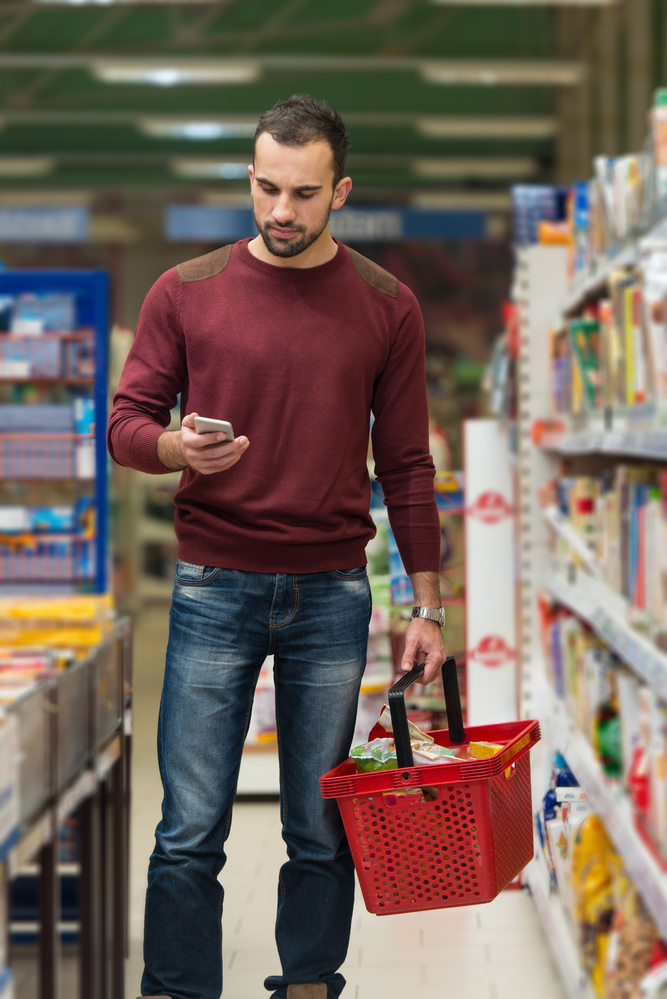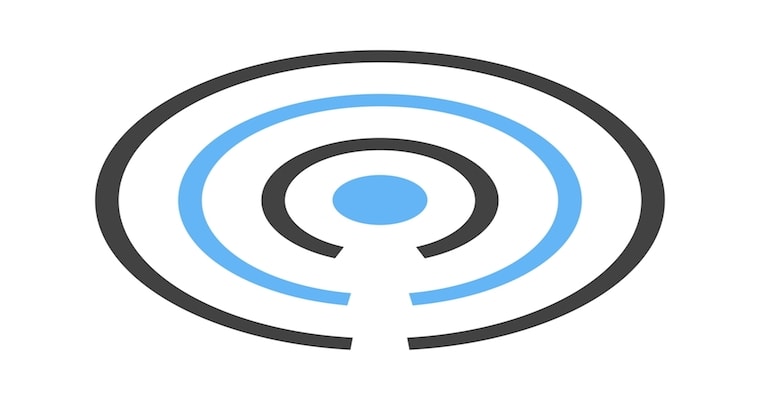Beacons, the in-store devices that help retailers communicate with consumers on their mobile devices and theoretically enhance the in-store shopping experience, could mean big changes in SEO as they evolve.
First and foremost, given the interaction can only occur when consumers are within a specific geographic range, beacons will increase the importance of local search – and they may force businesses to make local more of a priority in order to influence potential customers about where they want to go to obtain the products or services they are searching for in near-me moments on their mobile devices.
“With this visibility in the SERPs, a visitor would receive information about the businesses that surround them so they can choose where they would like to go to obtain the services, which would put them in range of the beacon and allow the brick and mortar location to market directly to them,” said Nathan Stenberg, organic SEO specialist for integrated marketing agency Anvil Media.

This could include promotions such as daily or weekly specials that are only available to visitors of the location or a discount for first-time in-store customers, he added.
However, per Luke Rees, digital marketing lead at search agency AccuraCast, consumers are increasingly savvy and a push notification to an in-store consumer won’t necessarily seal the deal, as said customer can easily compare prices on his or her mobile device. Further, he noted beacons are Bluetooth-enabled, which means they have limited capability when it comes to follow-up queries.
“If the ad doesn’t provide the information that’s needed all at once, search may be required,” Rees said. “You’ll clearly want to make sure your brand is providing the relevant answers and contact details in the mobile search results.”
Editor note: to learn more about beacons, listen to this Marketing Nerds podcast with Casey Markee:
Here are nine other ways beacons could change search:
1. Beacons Could Enhance the Importance of Hyper-Local Search
Per Sam Williamson, SEO executive at digital media firm Aims Media Glasgow, beacons could present an opportunity to optimize for hyper-local searches and to find specific answers to hyper-local queries, which he said is something Google has struggled with to date.
However, he also noted hyper-local searches are incredibly specific, which means it’s not only difficult to optimize for them, it may not actually be worth it.
“Because these searches will be so specific, for example, ‘Where is terminal 4 in CDG airport,’ I imagine that the results will be presented in the form of a Knowledge Graph,” he said. “Once one article has been created outlining where Terminal 4 is, will Google really need to display any others? Furthermore, what kind of ads would be displayed alongside a search for terminal gate at an airport and would users actually click them? This is highly debatable. Unlike other searches that we carry out, these hyper-local searches tend to have very little buyer intent.”
2. Beacons Could Yield Even More Personalized Search Results
According to Joe Scartz, managing director of digital commerce and integration at retail marketing agency TPN, beacons are “dumb devices” – a consumer walks into a store and if said customer has the right app, his or her phone receives push notifications. However, as beacons evolve, consumers will potentially receive more personalized information from them.
“What we want to see today based on proximity is how can [beacons] serve content and information that is relevant based on where you are and your previous profile in a way that prioritizes certain content over another,” Scartz said. “That’s where we’ll see more of this SEO activity.”
Similarly, Adam Binder, founder of digital marketing agency Creative Click Media, said beacon data could be paired with data from prior search queries to help better meet consumer needs in real-time.
“One of the benefits of beacons is that you can reach your audience in real-time in their exact location. For instance, if a customer was recently searching for jeans, beacons will alert them when there is a store in their location with jeans on sale,” he said. “Retailers have found beacons to be extremely successful in connecting customers with the products they are searching for, with a 2015 study finding that 42 percent of retailers are already using search marketing and beacons and another 39 percent plan to use them by 2018.”
Further, per Evan Calafates, Search Marketing Manager at advertising agency EGC Group, beacons could help brands tap into micro-moments in search if they know, say, a consumer is returning to a particular location. In that case, the retailer could specifically target that consumer with search or display ads.
3. Beacons Could Become a Ranking Signal – and Improve Local Results
In addition, Calafates said Google could collect beacon data on locations and foot traffic, which could become a ranking factor.
Beacons fall under what Matt Brooks, co-founder and resident SEO expert of web design and SEO agency SEOteric, called interruption-based marketing, in which brands send messages to consumers to entice them to make a purchase. But in order for beacons to be integrated into SEO and classified as a ranking signal, they will need to be able to listen to users as well, he said.
“Google already has a strong local influence on search results based on where I am located and what is around me, so beacons could be used as an additional local ranking signal,” he said. “As a user looking for something like ‘restaurants near me,’ beacons could play a role in giving additional local ranking signals based on that mobile search. Google is already doing this based on your IP address and location, so beacons could improve the quality and accuracy of these results.”
4. Beacons Could Pull in Data from Devices, Which Could Further Influence Results
As mobile devices adapt, beacon technology and as beacons evolve, they could potentially be able to interact at retail locations like stores and restaurants, Brooks said. In turn, this interaction could be used to integrate beacon data with the data on users’ mobile phones – like contacts or Facebook – thus providing what Brooks described as a more social interaction in real-time.
“This could help influence search results or even the delivery of a specific message from a beacon at a location,” he added.
In other words, beacons could theoretically pull in data about the likes and purchase behaviors of consumers’ friends and, in turn, search engines could use that data to cater the results they serve when they know where that person is located. Further, he noted this is really just an extension of the current scenario in which consumers receive personalized results based on their search histories and locations.
5. Beacons Could Spur Consumers to Query What Their Friends Like
Consumers could specifically query what products and services their friends like and/or have purchased when the query takes place inside a retail location and the beacon helps inform the search engine what results to deliver.
Per Calafates, companies like micro-location marketing platform Ubudu are already using beacons as listening devices and connecting users to ad platforms and DSPs like Facebook and DoubleClick.
“As this connection gets more refined…we could see Facebook connecting data captured from beacons for friends from their personal community to view,” he added. “If beacons get [to] this point where they can pinpoint a user’s location, and give them information based on what others think about the product they’re looking [at], it’s only a matter of time before users search with this intent.”
He likened it to local programs and maps that have made the “near me” query grow exponentially, as well as the way in which voice search is driving long-tail queries with syntax tied to them, causing search engines to become smarter.
“Maybe the next wave of searches evolved from technology is personalized searches from the connection of social profiles and beacon-driven ads at the point of purchase,” he said.
In other words, if this trend continues, searches could theoretically start to include even more individualized requests and that, in turn, could be further territory for organic optimization.
Brooks agreed.
“If beacons can interact with user mobile devices, they could be used to influence search results and influence the specific messages/offers that a beacon delivers to individual users,” he said.
I.e., if beacons develop a way to listen to users and users can interact with stores or products, beacons could play a role in search, wish lists, and social influence.
“Imagine walking by a store in the mall and getting a notification that your wife or girlfriend had recently liked a product in a particular store or had just added it to her wish list,” Brooks said. “What if you are trying to decide between two brands of fertilizer and searched for the difference in the two. Beacon data could influence search if it knows that several of my friends chose one over the other. This type of data would be seen as valuable to consumers and may encourage them to download the apps needed to interact with beacons. It could also encourage phone developers to build this technology into their software and devices in the future as well.”
6. Beacons Could Help Marketers Better Anticipate Consumer Needs
For his part, Brooks pointed to The Physical Web, which Google calls “an open approach to enable quick and seamless interactions with physical objects and locations.”
It allows users to tap any object with their mobile devices without installing apps to access content associated with the space around them. And, per Brooks, The Physical Web will further encourage the development of beacon technology.
“As this technology is adopted, SEO could become as much about providing answers before the user even asks as it is about search,” Brooks said. “Marketers will have to become good at anticipating user needs and delivering messaging in real-time.”
Similarly, Matt Bentley, founder and creator of SEO intelligence tool CanIRank, pointed to implicit search, or search that doesn’t involve the user explicitly typing a query, which he said opens opportunities for brands and marketers to be the brand of choice when a consumer is looking for something.
“When you ask to be directed to tennis racquets, does it direct you to the Prince or Head display? If your Internet-enabled fridge runs out of milk, which brand does it order? If you ask Siri to find a good nearby pizza place, which one does she direct you to?” Bentley asked. “This is the implicit search explosion that we’re just beginning due to the rise of AI and IoT. Although those implicit searches may look different than today’s Google search, they still involve a computer algorithm selecting one business over another and that means those businesses will want to do whatever they can to be the business that gets selected.”
7. Beacons Could Mean Opportunities to Optimize Within Open Networks
Scartz pointed to Eddystone, an open beacon format from Google, and opportunities to serve content to users based on where they are and their past histories.
“With Eddystone, we have for the first time an open beacon platform with an opportunity for scale,” he said, pointing to retailers like Walmart, which may have struggled to gain scale with beacon deployments to date because in part they only work within that particular network of stores. If, however, Eddystone takes off, there’s an opportunity for brands to serve content in an open format, which he said then raises the question of which content rises to the top.
For example, with Eddystone, a brand like Samsung could lease space on a beacon network of a retailer like Best Buy to serve content to in-store consumers.
Further, per Matthew Davis, vice president of marketing at mobile audience analytics platform Reveal Mobile, Eddystone permits beacons to broadcast URLs and not just beacon identifiers and exposing beacon data to the mobile web could create more opportunity to leverage beacon data for SEO.
In addition, Scartz pointed to the Proximity Beacon API, a cloud service that allows users to manage data associated with their beacons, which he said means brands will be able to detect nearby beacons and serve users web-based content and SEO will be a factor once there is enough content on the same beacon network to need to prioritize it, he added.
“I definitely see activity picking up with this in the next 12 to 24 months. Everybody is hungry for this. Everybody wants to tap into some kind of proximity communication and they want their content at the top of the list,” Scartz said. “If you’re in a crowded space in an urban area or shopping mall, manufacturers will be clamoring to have their share of the digital shelf space…the next layer is going to be — as we move into the networked beacon world that’s open like Google – we’re going to start seeing different modes of content delivery that don’t necessarily require the hardware to change, but will require updates to the OS and I think that based on that and the hunger from the retailers and manufacturers, you will see some significant stories.”
8. Beacons Could Serve as an Alternative in Attribution and Better Inform Retargeting and SEO
As retailers deploy beacons by the tens of thousands, they’re building the physical equivalent of a network of digital tracking pixels, Davis said. That means we’ll reach a point in the next few years where most, if not all, major retailers, venues and theaters all have beacons.
“As devices bump into these beacons, retailers, brands and agencies will use this data to inform retargeting, attribution and SEO,” Davis added. “That’s because beacons bring accuracy to within meters, versus lat/long, [which] is typically only accurate to within 100 meters. Bad location data would equal bad SEO if you’re attempting to serve results based upon visit behaviors. Someone visiting a strip mall that goes to Bed Bath & Beyond is different than someone visiting Home Depot. “
9. Beacons Could Better Inform Data Collection
Per Rees, brands can also use beacons for data collection. In fact, he said CPG brand Unilever used Apple’s iBeacons not to push advertisements but to collect customer data and then remarket to them later on.
“There’s no reason why offline beacon data couldn’t be used to inform SEO also,” Rees said.
Conclusion
Beacons present an opportunity for both retailers to learn more about their customers – and to use that information to better hone the offers they present – as well as for consumers to conduct even more nuanced queries.
Image Credits
Featured Image: dxinerz/DepositPhotos.com
In-Post Photo: ibrak/DepositPhotos.com





